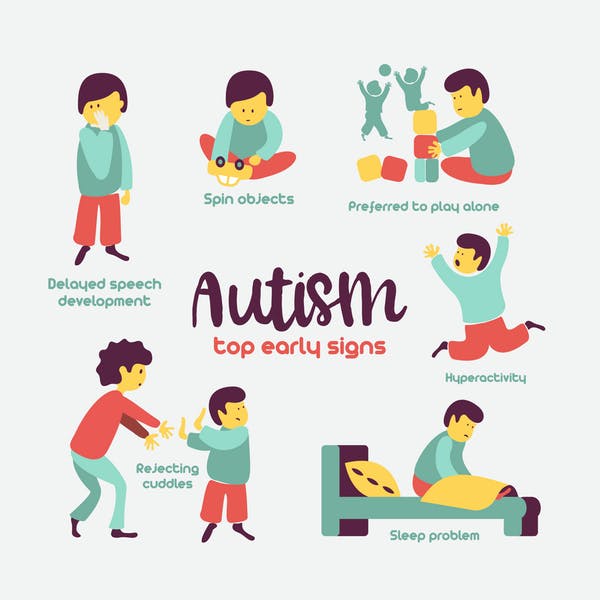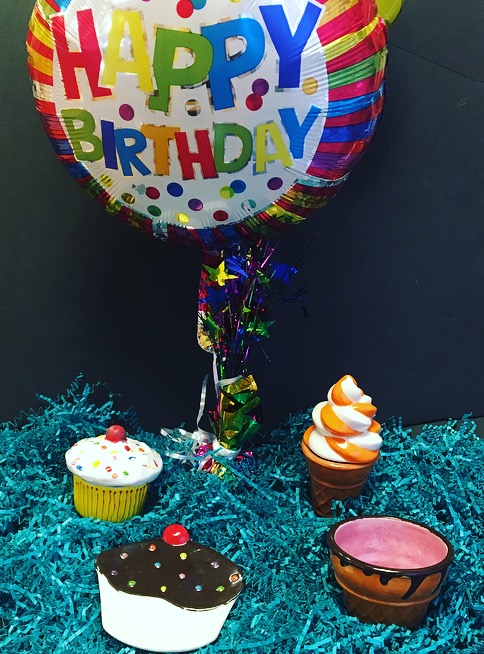
I used to dread this time of year. I went through a phase where I loathed walking through the baby/toddler department of a store, looking for toys for my son who is neither a baby nor a toddler. But I got over it. Now, having this blog for almost 10 years, parents often ask me, “What are the best toys for a special needs child? What sensory toys do you recommend for autistic kids?”
So I asked my son’s BCBA, Bridget McNelis, MEd. I asked what she felt are some of the best toys for kids with special needs such as autism, intellectual disabilities or developmental delays. She just started spouting off suggestions. Thankfully she was willing to turn it into a blog post!
Best toys for children with special needs
By Bridget McNelis
This list is geared toward younger children with developmental delays or older children who are functioning on a lower level than their peers. I would suggest not reading too much into age ranges or what gender a toy says. At the end of the day, who cares if an 8-year-old boy plays with dolls? There is so much to be learned in the process. Your kids are hard at work building and acquiring skills as they learn about the world.
Now that I have three children of my own, I have a real appreciation for the thought, energy and hard earned dollars that go into buying toys. With this perspective, I have made a point of talking to all of the families I work with about holiday shopping.
Puzzles
With puzzles, kids with autism and other developmental delays can work on:
- fine motor skills
- cognitive matching skills
- simple compliance task to be completed
Sensory Toys
Talk with your child’s OT about your child’s sensory needs. Some have sensory aversions, some seek sensory, many do both.
Beads for stringing/lacing are great for fine motor needs. When selecting your beads for lacing, I would suggest that you think “function” and “multi-purpose”. When you select your beads for stringing, pick ones that can be used in different ways. You can use beads for:
- sorting by color, shape, item, etc.
- some beads have pictures on them or beads that are small objects
- will help prompt communication skills and language acquisition
- the child can request or identify beads by attribute, item, etc.
Real life toys-mimicking every day life-help develop language and cognitive skills
Using real-life versions of toys is a great way to:
- promote language development
- cognitive ID skills
- pretend play skills
Also, adding items to toys/activities you may already have such as kitchen items or baby doll items can make them educational.
With kitchen items and baby dolls, there are a lot of functional imitation skills you can work on (with real-life objects, doing real life things), on top of the pretend play skills you are developing and the ID skills you are building with these toys.
There is a lot of vocabulary that is functional and important to be used with these toys.
You are now exposing and talking about everyday items and the actions that go with these toys with your child.
Add some more food or a tea set to that kitchen.
Consider getting your child’s baby doll a stroller, crib or highchair.
Games for taking turns and socialization
When it comes to games, you should pick a focus. Do you want your child to:
- be involved with their siblings in some way
- learn/practice turn taking
- improve cognitive skills
If you ask yourself what you want out of a game, it may help you make a better choice when selecting games.
A memory game is good for:
- cognitive and language skills
- can be used outside the context of a game
- have your child match pictures as a tabletop activity
- to be done independently, or if your child is not currently able to match a picture to picture, you can use the memory cards to work on this important matching skill
Finding educational value in traditional toys
Blocks and Legos are just awesome, plain and simple. Kids are working on:
- fine motor skills
- problem-solving
- improving cognitive skills
- imitation — can your child build the same three-piece building you have made?
Can your child imitate banging on the table with that long yellow Lego versus the tiny red one? Can your child request those blocks you’ve kept on your side of the table?
Request any of them by color?
And as far a multi-purpose goes, feel free to add Legos and blocks to the list of things you have them sort and categorize. So much cognitive appeal here with these classic toys!
 Who doesn’t love a doctor’s kit? Lots of pretend play skills to be had here. That baby doll is just waiting to get their shots and have their temperature and blood pressure taken.
Who doesn’t love a doctor’s kit? Lots of pretend play skills to be had here. That baby doll is just waiting to get their shots and have their temperature and blood pressure taken.
It’s a toy that has always been around because it’s always been fun, and meanwhile, you are sneaking in language development by talking to your child about:
- what we do at the doctor’s office
- why we go to the doctor
- what we find at the doctor's office
- talk about what hurts
Shape sorters for:
- fine motor
- problem solving skills
- identify or choose the pieces
Books, stickers, sticker books for:
- fine motor
- language
- cognitive development
Books with large, easily identifiable pictures are a great way for you:
- to read to your child
- let your child be involved
- having your child identify those items and actions
- helps build their receptive and expressive vocabulary
- repetition
Books that are repetitive will help you work on your child’s verbal skills. Brown Bear books are a good option. Let your child fill in the “what do you see” parts, or any other part they might know. Repetition is good!
Stickers
Stickers are the ultimate stocking stuffer! Stickers are an underrated item to be used for fine motor skills. Big stickers, little stickers, base it on your child’s needs and interests.
With sticker books, you can:
- categorize
- sort
- identify
- fine motor skills
Matching puzzles
 There are many different match-It puzzles out there. They range from puzzles that are simple two-part puzzles (such as the heads and tails) to the higher skilled puzzles (such as counting and matching words to their pictures). The skills addressed by matching puzzles:
There are many different match-It puzzles out there. They range from puzzles that are simple two-part puzzles (such as the heads and tails) to the higher skilled puzzles (such as counting and matching words to their pictures). The skills addressed by matching puzzles:
- language and cognitive skills
- matching
- associations
- sequencing
- usually cheap!
- independent task completion
I work with older children who work on these as independent activities at a table while their parents attempt to cook dinner or squeeze in a phone call.
Toys for gross motor skills
Make sure your child has balls to throw, kick and catch.
Something to ride on or climb outside are also good options. This one is easier to save money on as a trip to the playground covers a lot of the gross motor skills that your physical therapist is likely targeting.
If you have a child who is a sensory seeker, you could try a trampoline or swing in your home. But talk to your OT and PT first, let them get back to you before you install something in your home or invest in something that takes up a lot of space.
Other suggestions
These all hit gross-motor, fine-motor, cognitive and language skills.
- Bead maze
- Infant activity table
- Activity cube
- Easel and chalk
- Sidewalk Chalk
- Wagon
- Tent (with or without ballpit balls). Amazingly, these are under $40!
- Fisher Price Little People Toys
- Construction Toys
- Vehicles — all kinds
- Shopping cart
- Lawn mower
- Bead maze
- Infant activity table
- Activity cube
- Easel and chalk
- Sidewalk Chalk
- Wagon
- Kid-sized table
- Kid-friendly book shelf
- Housekeeping toys
- Dramatic-play costumes
- Toy phones
- Riding toys (in the house)
- Riding toys (outside)
- Climbing toys (inside or outside)
- Basketball net/soccer net (inside or out)
- Balls (various kinds)
- Sand/water table
Use shelves and clear bins to house toys out of your child’s reach to encourage requesting and as a way to rotate toys out if you need to.
The last thing I want to do is sound preachy, I promise, so I apologize if that is how I sound. It’s not easy to play with your children as much as you would like with all of the things parents already have to do. If you aren’t sure where to start in teaching your child how to play with toys or if you aren’t sure if your child will like something, talk to your teachers. Other than you, there’s no better reference about your child.
So, happy playing and happy shopping this holiday season! — Bridget McNelis
Lisa Lightner is a Chester County, PA mom of two. This post is adapted from the blog A Day in Our Shoes, which she co-authors. It provides support, resources and advocacy services for parents of children with special needs.






